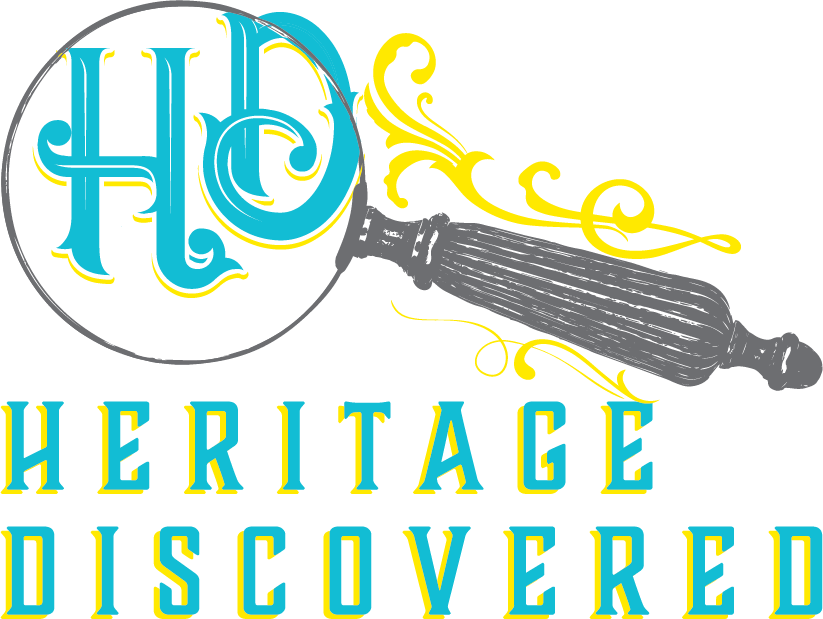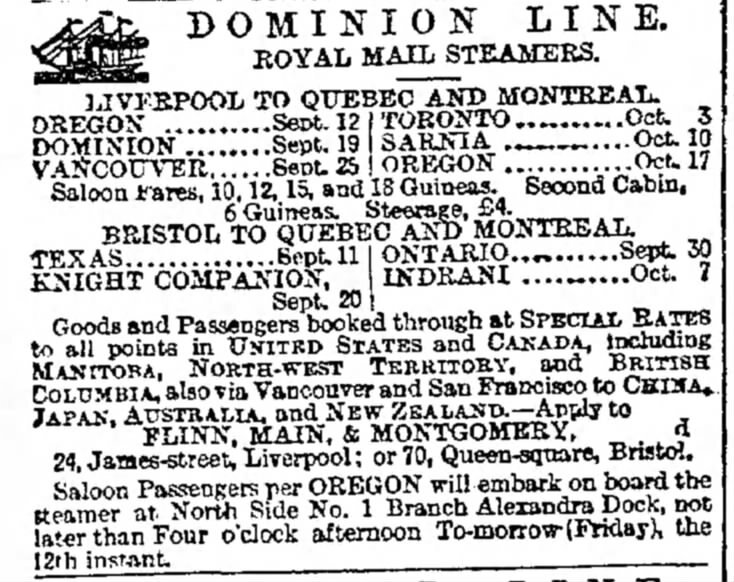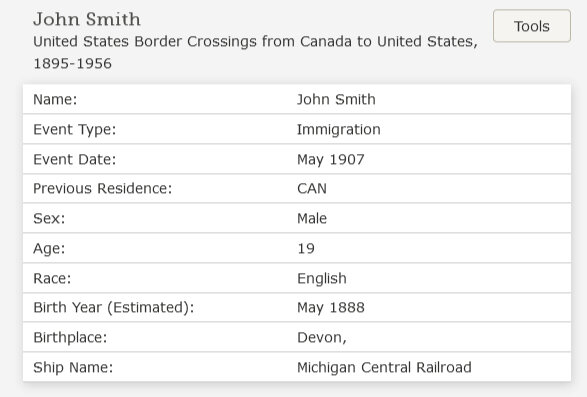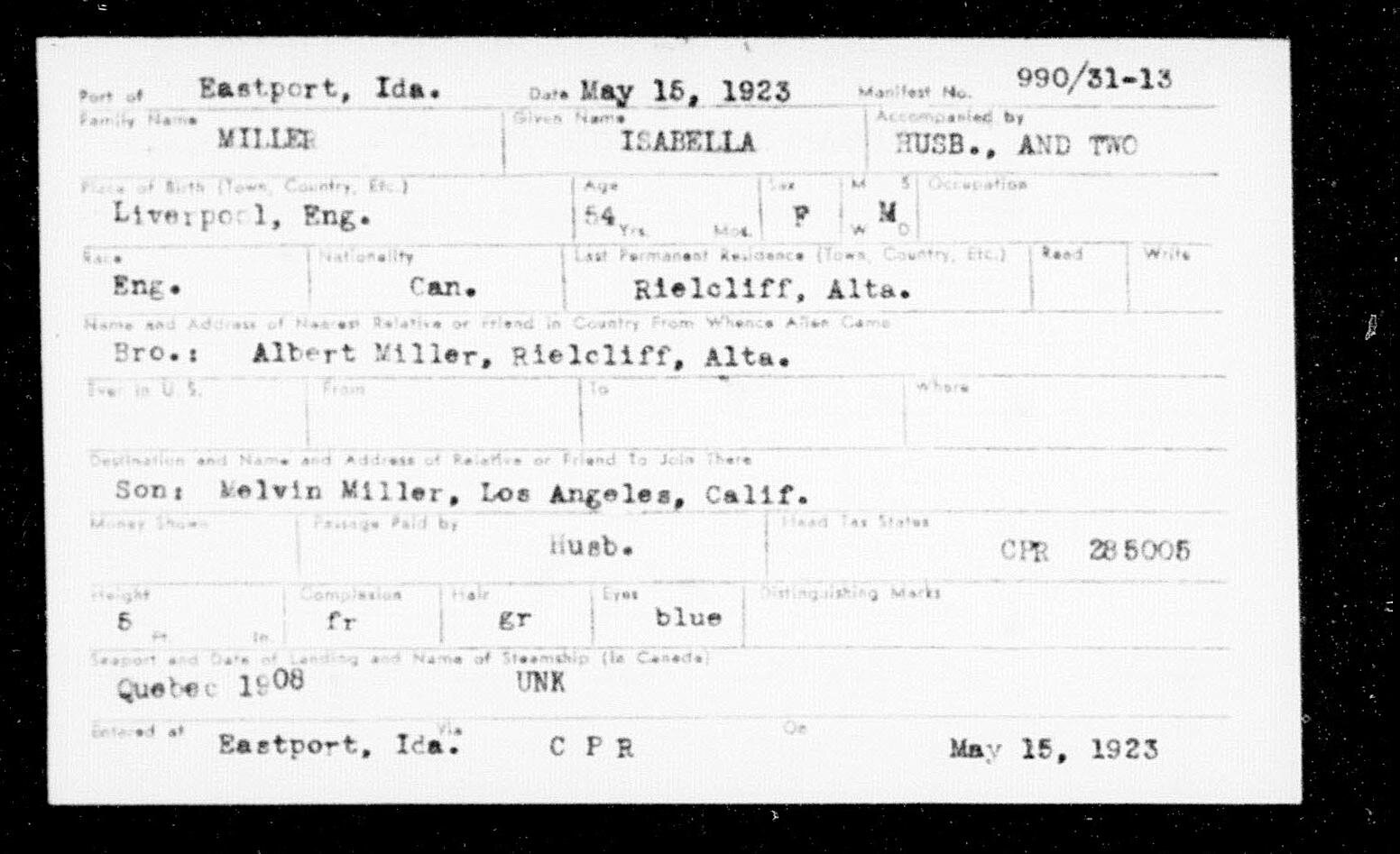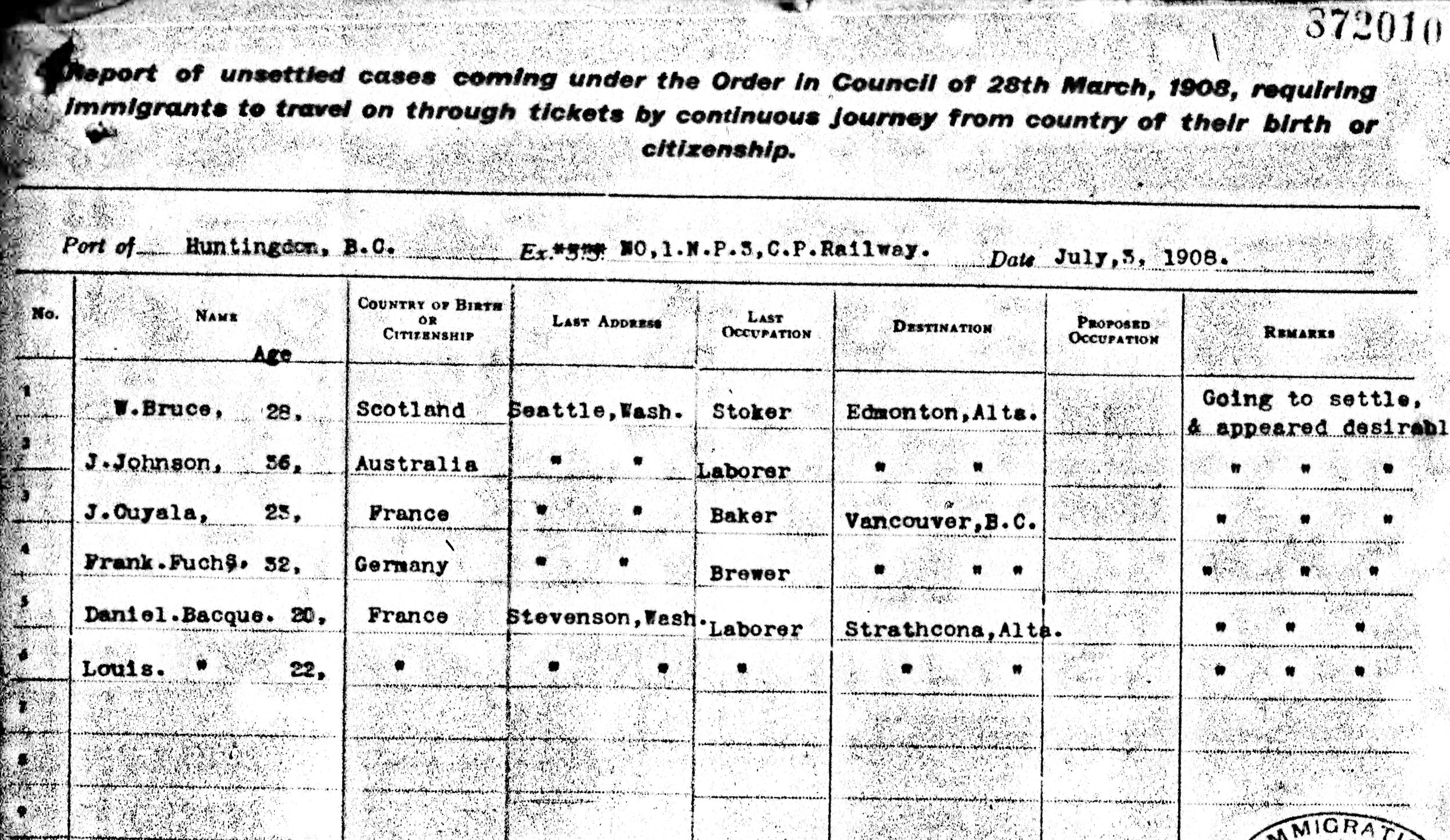4 Great Genealogy Resources For US Canada Border Crossing Records
This post may have affiliate links, which means I may receive commissions if you choose to purchase through links I provide (at no extra cost to you). All opinions remain my own.
If you have family that came to the United States from Canada, whether they were Canadian or passing through, you may be able to find records of them entering the US.
These US Canada border crossing records can be great for your genealogy research and can tell you when and where your ancestors came over.
What you can find depends on the time your family was traveling.
If you don’t know when your family crossed over from Canada, try using a US census immigration worksheet to pinpoint when they arrived and gather all their immigration and naturalization information in one place.
Before 1895, travel between the two countries was open, with no records of entries in either direction. (But don't stop reading here if this applies to your family! There's more below.)
But as the immigration rules tightened in the US in the 1880s, immigrants began going through Canada on their way to the United States. Some did this to avoid immigrant quotas.
Some people went to Canada first because it was more affordable than sailing directly to the US.
And some people from the United Kingdom and Ireland came via Canada because it was (and still is) part of the British Commonwealth, so technically they weren’t leaving the country.
By 1895, the US government changed things up to hamper these practices. They created what is now the Immigration and Naturalization Service and established border crossing stations across the country.
They set up agreements with Canadian railroad and steamship companies that applied US immigration laws to immigrants to Canada. This included creating passenger manifests and stationing US immigration officials at certain Canadian ports. The officials would collect the manifests and inspect people, then issue a "Certificate of Admission" to those who passed.
The companies also agreed to only accept passengers to Canada who were allowed under US rules, or who were legally admitted to the US.
One of the types of land port manifests was a “List of Manifest of Alien Passengers Applying for Admission to the United States from Foreign Contiguous Territory”. This list had the usual immigration information, like the port, date, and the steamship the immigrant arrived to Canada on.
Before 1 October 1906, immigrants born outside of Canada and passing through on the way to the US were reported. But after that date, immigrants born in Canada were also included on the manifest.
These railroad and steamship records are now commonly called the St. Albans Lists and are held at the National Archives. These lists actually include ports from all over the US/Canadian border and not only St. Albans, Vermont (where the records were kept).
Besides the St. Albans Lists, the National Archives has records for other points along like the border, like Detroit and other “small ports” in Vermont.
The records of entries only include people traveling by ships or trains. If your ancestor came by car or another method, they unfortunately won’t be documented in these.
But these aren’t all that’s available. There are other border entry record collections for the US and Canada that you can find online.
Related posts:
How and why to research your collateral ancestors
Nine books to energize your French-Canadian genealogy research
What if your family immigrated earlier?
You may be wondering how these border crossing records are useful if your family (like mine) immigrated before 1895?
Well, they may have gone back to Canada to visit relatives, or relatives may have come to visit them in the States. These relationships could be captured in the records.
If this is the case, you can find information about your family, even if you don't find your direct ancestor.
I have a lot of French-Canadian ancestry, but they all immigrated to New England in the mid-1800s.
Or so I thought.
A couple of years ago, I stumbled upon a whole second family that my 4th great-grandfather, Moise Boisvert, had with a second wife. I had wrongly assumed that since he was 53 at the time of his 2nd marriage that he didn’t have any more kids.
I was so wrong.
He had another 9 children with his second wife! They were born in the 1860s and 1870s.
And they showed up in Canadian border crossing records.
One of his sons, Amede, crossed several times, going between Quebec and New Hampshire.
This record below doesn’t have a lot of information, but does give a physical description. It also tells me he had 7 kids and was living in Manchester, New Hampshire, which is how I found him in the US.
So, even if your ancestor immigrated earlier, there could still be travel back and forth to visit family who stayed in Canada. You might find interesting information in these entries.
What you can find in United States - Canada border crossing records
The information you find in border records varies based on the type of form.
These records may include:
Name
Port of entry (including land)
Entry date
Last residence
Name of the nearest relative at their last residence
If they visited the United States before
Physical descriptions
Birthplace
Occupation
Final destination
Marital status
How long they intended to stay
Now that you know what’s possible to find in Canadian border entry records, the next question is where can you find them?
Border entry records from Canada to the United States
Sources on travel from Canada to the US are generally found on the large genealogy websites.
These collections are generally organized by year ranges, like many other collections. If you don’t know when your ancestors arrived, use a US census immigration worksheet to narrow down their arrival dates.
1) FamilySearch
FamilySearch has some wonderful Canadian border crossing collections.
The St. Albans Lists can be found in United States Border Crossings from Canada to United States, 1895-1956. This is an index-only collection. The original images are on Ancestry (more on that below). But there is still some helpful information to be found in this to get you started on your search.
For example, you can see this entry gave the crossing month and year, birth month and year, a birthplace, and the method of transportation to the US. Some entries also give other family members and more details.
You can also find the St. Albans records in United States, Border Crossings from Canada to United States, 1894-1954. This collection has passenger manifests and index cards for different ports along the border. You can find genealogical details, such as nationality, last residence, and the addresses of their nearest relative.
You can see below that Margaret Simpson was from Scotland and her destination was Waukegan, Illinois. It also shows the name and address of her grandfather, and more.
Vermont, St. Albans Canadian Border Crossings, 1895-1954 has images for both the Soundex cards and the passenger manifests for the St. Albans lists.
Other highlights of Canadian border records on FamilySearch are:
Michigan, Detroit Manifests of Arrivals at the Port of Detroit, 1906-1954. This contains card manifests for people coming in through Detroit, but also has records for other Michigan ports.
Montana Manifests of Immigrant Arrivals and Departures, 1923-1956 has card manifests for arrivals at several ports in Montana.
Idaho, Eastport, Arrival Manifests, 1924-1956 has digitized card manifests.
2) Ancestry
Ancestry also has some great collections, with a little overlap with FamilySearch.
U.S., Border Crossings from Canada to U.S., 1895-1960 has the St. Albans passenger manifests and a lot of other border records, including New York, Vermont, and Washington. This is the collection you’d use if you found someone in the St. Albans index on FamilySearch mentioned above.
U.S., Records of Aliens Pre-Examined in Canada, 1904-1954 has card manifests that were created before an immigrant arrived at the border.
Detroit, Michigan, U.S., Border Crossings and Passenger and Crew Lists, 1905-1963 has images of card manifests as well as passenger lists of ships arriving in Detroit.
Canada, Border Crossings from U.S. to Canada, 1908-1935 is a fascinating collection that is browsable by port, such as New Brunswick and Maine. The collection has a mix of different entry card and manifest forms, depending on the port.
This interesting manifest notes that W. Bruce was going to settle and “appeared desirable”!
British Columbia, Canada, Border Entries and Passenger Lists, 1894-1905 has manifests of people crossing from British Columbia into the US. This includes both ship and land arrivals.
3) Find My Past
Find My Past also the St. Albans Lists, both the Soundex cards and the passenger manifests.
Related posts:
Why you should be using libraries and archives in your genealogy research
Why isn't my ancestor in the census?
The National Archives records
The St. Albans Lists can also, of course, be found at the National Archives on 6 microfilms.
Soundex Index to Canadian Border Entries through the St. Albans, Vermont, District, 1895-1924 (M1461)
Alphabetical Index to Canadian Border Entries through Small Ports in Vermont, 1895-1924 (M1462)
Soundex Index to Entries into the St. Albans, Vermont, District through Canadian Pacific and Atlantic Ports, 1924-1952 (M1463)
Manifests of Passengers Arriving in the St. Albans, Vermont District through Canadian Pacific and Atlantic Ports, 1895-1954 (M1464)
Manifests of Passengers Arriving in the St. Albans, Vermont, District through Canadian Pacific Ports, 1929-1949 (M1465)
Card Manifests (Alphabetical) of Individuals Entering through the Port of Detroit, Michigan, 1906-1954 (M1478)
The microfilms are available to look at the National Archives in Washington, D.C., and some branches.
Related posts:
Everything you need to know about using home sources
What to know about alien registration files and where to find them
11 smart strategies for searching for ancestors that changed their name
Final thoughts
If you family immigrated from, or through Canada, you may have luck finding them in border entry records. Even if they arrived before 1895 when the rules went into effect, you may still find them going back and forth to Canada to visit relatives who stayed behind. Figure out their approximate arrival years with a US census immigration form so you can more easily know what records are available for your family.
